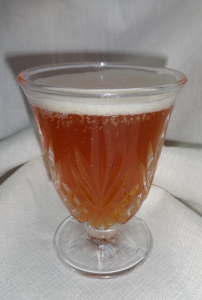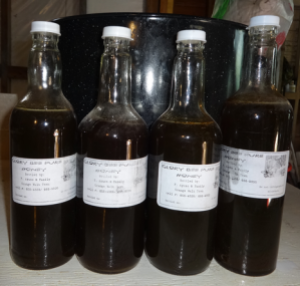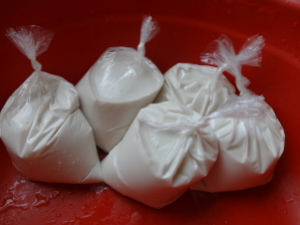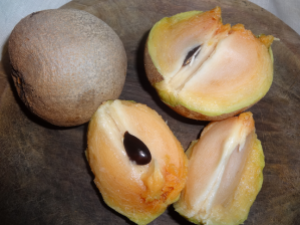 Gnome was full of beans this morning and brimming with energy right from the get go. He was out of the house by 5.30am with the brush-mower clearing the back of the farm. I started cleaning buckets and basins, started a big pot of beans on the stove and washed sheets for koji making. It was bean mania and the various bean preparations continued to exude beaniness into every square inch of the house.
Gnome was full of beans this morning and brimming with energy right from the get go. He was out of the house by 5.30am with the brush-mower clearing the back of the farm. I started cleaning buckets and basins, started a big pot of beans on the stove and washed sheets for koji making. It was bean mania and the various bean preparations continued to exude beaniness into every square inch of the house.
When we finally met up again, Gnome had grated coconuts and I proceeded to squeeze the cream out of them. I then laid out the coconut meal in the sun for the making of flour.
After this, it was back to the beans. The night before we had decided upon making a “meatier” hatcho miso and so today we made Beef Jerky Hatcho Miso or as Gnome has coined it “Meat Lover’s Hatcho Miso.” This involved putting 20 cups of fresh black bean koji and 2 lbs (1kg) of beef jerky through a meat grinder.

There was a few cups of black bean koji left over so we decided to make a small batch of Taosi which is a Filipino fermented black bean preparation, made by soaking the koji in brine.

Next we took the freshly cooked beans from this morning and added more Aspergillus spores to start a continuous batch of black bean koji. Our goal is to fill a 55 gallon drum with hatcho miso…more about that in a later post!

We then had a brief intermission for food and refreshments. For those interested, we still think that it is important to sit down and eat two proper meals a day, despite all the frenzy and excitement. We had Chinese roast pork, pumpkins and shiitake mushrooms cooked in mead and sweet potato cakes.
Anyway, the next task was making Shinshu miso with the mountain of bungle beans from the freezer. This was Gnome’s idea since I had been giving him such a hard time about the bungle. Yes, we used up all the beans so problem has been solved. We made 2 and 1/2 gallons of this…ready in one year!

Phew, it has been a bean marathon. We were done by 2pm.




































